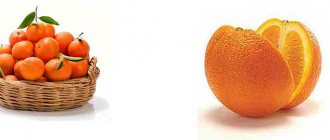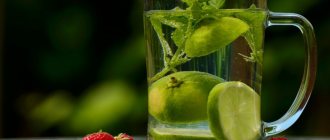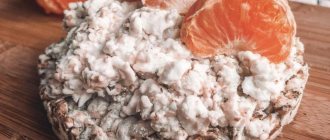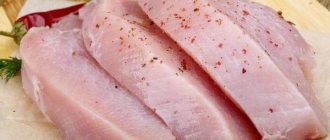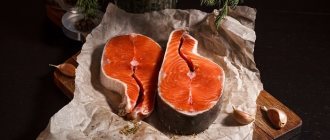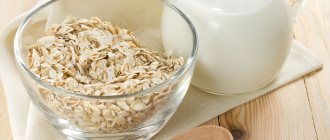Since it does not belong to strong alcoholic drinks, many consider it safe and even healthy. The appearance of a “beer belly” is explained by the fact that it is customary to snack on beer with chips, nuts and other high-calorie foods. But it is not so. It contains fewer degrees than, for example, cognac, the energy value of which is much higher per 100 grams. But they drink beer not in glasses, but in liters. The calorie content of beer is not calculated per 100 grams. One 1000 ml bottle already contains 500 kcal. Therefore, gaining extra pounds with constant consumption of it in large quantities is not at all difficult.
It does not belong to strong alcoholic drinks and many consider it safe and even healthy
Beneficial features
Due to the high kcal content in beer, the drink can be considered as a source of energy, but it is not recommended to abuse it.
The hop resins present in the product improve the functioning of the pancreas and enhance the secretion of enzymes. This ensures the absorption of nutrients. Organic acids further facilitate the digestion process. Sodium gives the product diuretic properties. The mineral helps maintain water-salt balance and improves the condition of the nervous system. Calcium helps strengthen bone tissue, teeth, nails and hair. Potassium facilitates the work of the heart muscle and prevents the development of diseases of the venous system with moderate consumption of the drink. Magnesium improves the absorption of B vitamins. Additionally, it contributes to the normal functioning of the endocrine system. B vitamins improve blood composition and speed up metabolic processes.
Useful properties depend on the degree of processing. The unfiltered product contains more extracts, so it traditionally contains more micronutrients.
Composition and nutritional value of the drink
Beer is a drink with a low percentage of alcohol, resulting from the fermentation of malt, hop cones, barley and yeast. Its taste and aroma are appreciated in many countries around the world. This is one of the most popular drinks among Czechs, Germans, Russians and Austrians. Today there are a large number of beers that differ from each other in taste, preparation method, alcohol content and calorie content.
The history of the drink dates back to the times of the early Neolithic. It seems that beer was brewed everywhere and always, only its components changed. Thus, the Chinese used rice as the main ingredient, and the Europeans used wheat, oats, rye and hops.
In Rus', beer has been brewed since time immemorial and was loved by both men and women. And now not a single party or picnic is often complete without it; they relieve stress at the end of a hard day and relax on the weekend. However, modern doctors have different opinions about the benefits and harms of this intoxicating drink.
Beer contains the entire spectrum of B vitamins, as well as vitamins C and PP, and one liter of the drink contains their daily requirement. In addition, it contains a lot of phosphorus, zinc, potassium, magnesium and iron.
Nutritional value 100 g:
- proteins - 0.5 g;
- fats - 9 g;
- carbohydrates - 5 g.
It should be noted that a 330 ml jar contains about 140 kcal, and a 0.5 liter bottle contains 450 kcal.
Beer consumed in small quantities saturates the body with essential starch compounds that normalize digestion. Hops additives have a calming effect on the nervous system. Phenolic components improve lipid metabolism and prevent the formation of blood clots, which reduces the risk of stroke and heart attack.
The negative impact is associated only with the low culture of consumption of this drink. After all, beer, provided it is consumed in moderation, is much safer than other products containing alcohol. But with excessive consumption, the heart muscle (beer heart syndrome) and the venous system are primarily affected. When men drink alcohol uncontrollably, their production of a hormone such as testosterone is suppressed. As a result, the shoulders become rounded, a “beer belly” appears, the chest becomes enlarged, and the head becomes bald.
Beer diet: calorie content of light, dark, filtered and unfiltered beer
There is an opinion that the calorie content of beer is very high, so its lovers are always accompanied by a “beer belly.” But that's not true. Beer itself does not contain many calories. People who constantly drink intoxicating drinks gain weight from fatty and salty snacks. If you don’t eat alcohol with high-calorie foods, you can drink it without fear of ruining your figure. This should be done in reasonable quantities so as not to become addictive.
WEIGHT LOSS STORIES OF STARS!
Irina Pegova shocked everyone with her weight loss recipe: “I lost 27 kg and continue to lose weight, I just brew it at night. » Read more >>
In addition, drinking beer helps many people lose extra pounds. But for this you need to know the principles and rules of the beer diet.
The calorie content of beer depends on the type, processing method and strength of the drink. The approximate number of kilocalories in each type of beer is given in the table:
The indicated calorie content is approximate, but it helps to draw a conclusion about which type of beer is safest for your figure. As can be seen from the table, black (dark) beer has more calories than white (light), and filtered beer has more calories than unfiltered beer. Non-alcoholic beer contains the fewest calories because it is purified from alcohol.
The exact calorie value depends on the manufacturer and is usually indicated on the bottle or can of the drink. To make the right choice, you can familiarize yourself with the list of the most popular brands, arranged in increasing order of kilocalories per 100 grams.
In addition to calorie content, you need to know the energy value of beer. This is important when calculating the balance of BJU (the ratio of proteins, fats and carbohydrates). On average, 100 grams of intoxicating drink contains:
- carbohydrates - 4-5 g;
- proteins - 0.5 g;
- fat - 0 g.
It is quite difficult to gain weight by drinking exclusively beer. This product, due to its low calorie content, can even be considered dietary.
Beer is much healthier for your figure than most other alcoholic drinks. For example, the calorie content of 100 grams of vodka is approximately 230 kcal, and wine - from 80 to 100 kcal. Therefore, drinking beer in itself rarely causes weight gain.
In almost all cases, drinking an intoxicating drink is accompanied by high-calorie snacks such as salted nuts, chips, smoked fish, fatty sausages, etc. It is this habit that causes beer drinkers to gain weight over time.
In addition, the salt contained in these products in large quantities retains fluid in the body. This leads to swelling and neutralizes the diuretic effect of the drink.
Beer has many beneficial properties:
- it contains vitamins C, B1, B2, as well as potassium, magnesium, phosphorus, zinc, iron and folic acid;
- it reduces the risk of strokes and heart attacks, since phenolic compounds prevent the formation of blood clots;
- restores the nervous system and improves digestion;
- The drink is a diuretic, thanks to which the body is cleansed of harmful substances, and the likelihood of the formation of kidney stones decreases.
All this, combined with its low calorie content, gives reason to call beer a dietary product. Therefore, lovers of this drink who want to lose weight do not have to give it up completely. There is even a special beer diet that helps you quickly lose weight.
This diet will appeal to men, who are often beer drinkers. For it to be effective, several important rules must be followed:
- beer should be of high quality and not too strong;
- Under no circumstances should you eat fatty or salty snacks;
- Before drinking, the drink should be cooled in the refrigerator;
- it is advisable to increase the consumption of clean water to 1.5–2 liters per day;
- After finishing the diet, you shouldn’t eat everything; you need to develop a balanced diet, otherwise the lost pounds will soon return.
The proposed beer diet is designed for a week. If you are not satisfied with the results during this time, you can extend it for another 7 days.
It is not recommended to stay on such a diet for more than two weeks, because beer is an alcoholic drink, so its long-term use is addictive and harmful to health.
In the popular Dukan diet, alcohol is prohibited. However, at the third stage, even in this diet, you are allowed to drink a little non-alcoholic beer.
Calorie content of alcoholic drinks
Compared to other alcohol-containing drinks, beer is the least important enemy of your figure. In the following table we will familiarize ourselves with the calorie content of various alcohols per 100 grams:
| Type of drink | Calorie content |
| Moonshine | Moonshine is one of the most alcoholic drinks today. It no longer enjoyed the popularity that it had before, however, in some parts of the country it also continues to be used. The calorie content of this highly alcoholic drink is also appropriate - about 240 kcal per 100 ml. Moonshine is not only very high in calories, but also harmful: in cases where it is not prepared by professionals, this drink can cause serious harm to health. |
| Cognac | Also applies to highly alcoholic drinks. The approximate alcohol content of cognac is 40%. Its calorie content is also high - 239 kcal per 100 ml. However, experts also note the beneficial properties of this alcohol-containing drink: in very small quantities it can relieve nervous tension, fatigue or stress. One tablespoon is enough for this. If the drink is abused, alcohol intoxication quickly sets in and alcohol intoxication occurs. |
| Champagne | The refined and festive drink is usually divided into several types: they all differ in taste, aging and calorie content. There are sweet, semi-sweet, Brut and Chardonnay. Brut is considered the lowest in calories, only 55 kcal per 100 ml. Next comes semi-sweet - 85-88 kcal per 100 ml. Chardonnay and sweet champagne share first place: 90 kcal per 100 ml. The role in the number of calories is played not only by the alcohol content, but also by the amount of added sugar, sweetener, flavoring additives, artificial and natural flavors. |
| Vodka | One of the most popular highly alcoholic drinks. In terms of calorie content, it is comparable to moonshine and cognac: as much as 235 kcal per 100 ml. The strength of the drink varies from 40 to 50%. Experts highlight the beneficial properties of vodka: it helps to disinfect affected areas, and is also used to treat colds. For medicinal purposes, the maximum permissible dose of vodka is 30 ml per day. |
| Wine | The calorie content of wine depends on what type of drink you prefer. There are several most common types of white wine: dry white (about 66 kcal per 100 ml), white Muscat (85 kcal per 100 ml), white Sauvignon (82 kcal per 100 ml), white dessert (about 150 kcal per 100 ml), white Riesling (80 kcal per 100 ml). Red wine has a different calorie content: dry red (67 kcal per 100 ml), table red (70 kcal per 100 ml), red Burgundy (85 kcal per 100 ml). |
When choosing an alcoholic drink, pay attention to the energy label
This is especially important when choosing wine: producers often add additional ingredients here to complement or diversify the taste. Thus, they change not only the taste characteristics, but also the calorie content
Thus, they change not only the taste characteristics, but also the calorie content
This is especially important when choosing wine: producers often add additional ingredients here to complement or diversify the taste. Thus, they change not only the taste characteristics, but also the calorie content
Calorie content in cocktails and mixtures
A separate story is beer drinks, all kinds of mixes, longs, consisting of several components. Why? Because their energy value is the average value of the sum of the nutritional values of all ingredients.
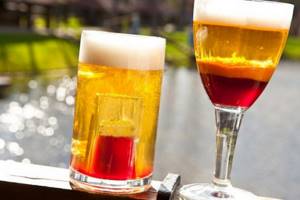
So that you don’t have to count, we, again, have compiled a table of popular and ready-made foam-based drinks sold in stores, as well as cocktails served in bars, and even mixes that can be easily made at home. So, let's see what and how nutritious it is.
Calorie content of beer per 100 ml
How many calories are in a bottle of beer? This depends on the selected variety and the percentage of drink ingredients. Calorie content of beer is 41 kcal per 100 ml. This means that in a glass with a capacity of 0.5 liters there are 205 calories. But the above figure is an average value. For a more accurate understanding, it is necessary to consider how many calories different types of beer contain (light, dark, non-alcoholic, live and ale).
In light beer
Light beer is a clear, low-alcohol drink with a pleasant aroma and dense foam. It has a mild taste and quenches thirst, which is enjoyed by millions of drink lovers. Light lager is the world's best-selling bottom-fermented lager. Most likely, the first thing you will be offered to try is in any beer establishment. The energy value of light beer is 42 kilocalories per 100 milliliters. Croutons, chips, pistachios and nuts, squid, dried and dried fish are used as snacks. Light beer is good to eat with sausages (which the Germans are guilty of) or pork ribs.
In non-alcoholic
Non-alcoholic beer is considered as such conditionally. Everything is relative. A “non-alcoholic” product contains between 0.3% and 1.5% alcohol. The production technology does not differ from light or dark varieties. Reducing the alcohol content in non-alcoholic beer is achieved through double filtration, suppression of the fermentation process at the final stage, or direct removal of alcohol from the finished product.
Such technological tricks cannot but affect the cost of the drink. Non-alcoholic beer costs a little more than regular beer (light or dark). It is an excellent alternative for people who do not like being intoxicated or who want to maintain a sober mind. The calorie content of the non-alcoholic product is 26 kilocalories per 100 ml. A glass contains 130 kcal.
Dark beer
The color of the finished drink is determined by the degree of roasting and the amount of dark malt used during brewing. It comes in caramel, chocolate and even burnt. Therefore, the color and taste of a light variety and ale differ. Dark beer has a bitter aftertaste from hops with a sweetish undertone. The product is also called “velvet”. Dark varieties are loved by women who find the taste of a light drink too strong. What is its calorie content? 100 ml of dark beer contains 48 kcal.
Live
Live beer is most often on tap. The drink does not go through a pasteurization process and is brewed without additional preservatives. The maximum shelf life in a dark and cool place is 1 week. The product is produced by small breweries that sell the drink locally. Live beer is light and bright, has a thick foam that lasts a long time and does not settle. The calorie content of the drink is 39 kcal.
The product is produced using “live” yeast, so fermentation processes continue even after it is poured into your glass. High-quality live beer is not filtered. However, any unfiltered product should not be considered “live”. After all, a drink that has gone through pasteurization and preservation may not be filtered. Live beer is more expensive than pasteurized beer, but believe me, it's worth it! The taste of the product is more pronounced.
In ale
Ale is a popular product in Britain and Ireland, which is brewed using top-fermentation technology. Special yeast, along with small bubbles of carbon dioxide, constantly rise to the top of the wort. The fermentation process of ale takes no more than a month; it takes place at a temperature of +20-25°C. The product is then sent to the basement. There the ale matures at low temperatures. Let us note one more nuance. Real ale is a type of beer served without carbon dioxide. In other words, it is poured from a barrel or thanks to hand pumps. Calorie content of 100 grams of ale is 41 kilocalories.
Manufacturing technology
As noted above, it is the complex manufacturing technology that manufacturers explain the higher cost of non-alcoholic beer compared to regular beer. At the same time, a drink with a low alcohol content goes through almost all the same stages as its alcoholic “brother”: the wort is boiled, hops are added, and it begins to ferment. However, at the final stage the product still faces the process of liberation from alcohol.
There are several ways to remove alcohol from beer. Heat is most often used. Alcohol has a boiling point that is an order of magnitude lower than water, it is about 78 degrees Celsius. At this temperature, the alcohol evaporates, and the water, which is the basis of the drink, is preserved. To reduce the strength of beer, it is kept at this temperature until the alcohol content is reduced to the required level.
We suggest you read: How long does it take for 1 liter of beer to leave the body?
There is another method - membrane. It is considered more “gentle” for the structure of the product, since it is not necessary to expose the drink to high temperatures. Dialysis is used instead.
It is also possible to initially leave the beer in a “low alcohol” state. For this purpose, special yeast is used that does not ferment malt sugar into alcohol. This process also involves the use of cooling the beer to a certain temperature, which finally stops fermentation. Note that the drink prepared in this way has a sweetish taste, far from the traditional one.
How is cognac made?
Most often, the berries of the Ugni Blanc variety are used to create elite alcohol. It has all the necessary qualities for making real cognac. This variety is characterized by high yield, it ripens slowly, has high acidity and is resistant to many diseases.
Some cognac companies use grapes of other varieties, for example: Folle Blanche, Montille and Colombard. These varieties of grapes have a deeper taste and aroma, but they are much more difficult to grow.
The quality of the future elite drink is ensured by a special preparation technology, which is divided into two stages: juice extraction and fermentation, during which the addition of sugar is strictly prohibited.
The first few years of aging are very important; it is during this time that the alcohol acquires a unique amber hue and is saturated with tannins. Depending on how long the drink was stored in the barrel, its final taste is formed.
alcoholism.com
Cognac is a strong alcoholic drink produced from special cognac alcohol obtained by distilling wines from certain grape varieties. The birthplace of this drink is France, and it owes its name to the French city of Cognac. The main white grape variety used for the production of cognac is the Ugni Blanc variety, the distinctive features of which are its high yield, high acidity and long ripening period. Along with Ugni Blanc, varieties such as Folle Blanche, Montille and Colombard can also be used. All of the above types of grapes are characterized not only by a rich taste and aroma, but also by a fairly low calorie content - 60 Kcal per 100 grams of product. Grapes themselves are considered a high-calorie product (73 Kcal per 100 grams of product), so it is usually avoided when preparing various types of diets, but the higher the acidity of the grapes, the lower their calorie content. Thus, we can say that for the production of cognac, grapes with the lowest calorie content, that is, white, are used.
The cognac production process eliminates the use of sugar during fermentation, which directly affects how many calories are in the cognac. Cognac alcohol absorbs sugar only at the stage of aging in an oak barrel.
As a result, the calorie content of cognac is 237.74 Kcal per 100 grams of product, which allows us to consider cognac to be a fairly high-calorie type of alcohol, outperforming even vodka, whose calorie content is 235 Kcal. how many calories are in cognac is answered by the cognac itself. The fact is that the stronger the alcohol, the more calories it contains. Cognac is an alcoholic drink whose strength is 40 degrees. For this reason, cognac is not recommended for overweight people. However, cognac does not have to be consumed in its pure form; it is also customary to add it to baked goods, chocolate, and coffee. Cognac is an excellent digestif and goes well with most foods. In addition, cognac has a beneficial effect on blood pressure and heart function, and helps with headaches and sore throats. Due to the high concentration of substances beneficial to humans in cognac, daily consumption of 30 grams of this drink can keep the body toned and in excellent shape, despite its calorie content.
cognacguide.ru
The lowest calorie alcoholic drinks
Even the consumption of the lowest-calorie drinks (for example, beer or dry wine) can cause excess body weight gain if consumed in excess. How can this be avoided? Let's look at the following tips:
Before starting the feast, drink 0.5 liters of clean water, or carbonated water. This will prevent you from drinking too much in the evening and prevent alcohol abuse. If you're drinking at a bar or restaurant, be intentional about ordering low-calorie drinks from the bartender. Remember that alcohol does not quench your thirst or appetite. Therefore, do not forget to have a snack, but in moderation. If you eat diet snacks and control your satiety, then you can enjoy drinking alcohol safely for your figure. Try cocktails such as Schorle or Shandi. These are mixtures of wine with sparkling water or beer with lemonade. Not only do these concoctions taste good, they help keep you from drinking too much and prevent you from overindulging in unnecessary calories. Count calories
On the day of the feast, pay attention to your daily caloric intake. Calculate how many calories you can consume today in the form of alcohol, and strictly follow this established norm.
Many cocktails add juices and sodas that contain large amounts of sugar. Try to avoid such cocktails or reduce their consumption to 1 at a time. Nutritionists give an indulgence: if you drink this or that type of alcohol, then drink it in its pure form and in small quantities. Or better yet, give it up altogether. Good for both health and figure.
Can you lose weight by drinking beer?
Many people believe that drinking a foamy drink will lead to the appearance of a “beer belly” and the gain of extra pounds in a short time. This is fundamentally wrong.
It is not the beer itself that is responsible for the fat layer that appears on the body, but the food that is consumed as snacks.
Chips, crackers, croutons, cheese sticks or pork ribs have enormous energy value, and when drinking low-alcohol drinks they are eaten in huge quantities.
The drink itself contains very few calories; a half-liter bottle of beer can be compared in energy value to one small bar of chocolate; there are even several beer diets that help you lose a fair amount of weight.
The components contained in high-quality beer speed up metabolism, which leads to weight loss over time.
How much can you drink while losing weight?
If you are planning to lose extra pounds, you should drink no more than 500 ml per day, but you must completely abandon the habit of eating smoked, salted or fried foods.
About beer:
Beer is the most common low-alcohol drink in our area, and not only that. The popularity of this drink is very great all over the world, especially increasing with the onset of summer.
What is beer?
This is a low-alcohol drink that is produced in huge quantities all over the world using the method of alcoholic fermentation of malt wort, using special brewer's yeast and, traditionally, with the addition of hops. The result is a drink with an alcohol content, depending on the variety, from 3 to 6 percent.
The main components necessary for the production of beer are: water, malt, most often barley, brewer's yeast and hops.
Malt is obtained from barley or wheat grains. To do this, the grains are soaked in water and germinated in order to convert the starch found in the grains into a soluble state. To stop the germination process, the grains are roasted in special ovens with hot air. The type of future beer depends on the degree of roasting, that is, the beer will be light or dark. There are types of beer that are made from different types of malt.
Hops are not used in beer production to make beer “stronger”. It’s just that hops give beer a pleasant bitter taste, increase the stability of beer and its shelf life.
Many of us drink beer very often. This low-alcohol drink is especially popular on hot summer days, as it quenches thirst very well. Hence the increased interest in the calorie content of beer. After all, the term “beer belly” has become very firmly entrenched among the people. And many believe that beer can affect the slimness of our figure. Well, how many calories are in beer? By the way, not much. In terms of calorie content, beer differs little from other food products that we consume every day.
Where then does this belief come from that people get fat from beer? The point is apparently that beer is usually drunk with crackers, nuts and other products, the calorie content of which is much higher than the beer itself. This is where the excess weight comes from...
Beer is a valuable food product that contains many nutrients. It has tonic properties, increases appetite, and promotes food absorption. In moderation, beer is beneficial for any healthy person. This low-alcohol drink contains from 1.5 to 6% alcohol.
Beer is a very common and favorite drink that has been known to people since ancient times. Despite the fact that the birthplace of beer was the countries of the hot sun, the drink does not withstand long-term exposure to sunlight and is very demanding regarding temperature. So, with a sharp change in temperature, the beer becomes cloudy and loses its taste.
The finished beer is filtered and poured into dark green or dark orange beer bottles with a capacity of 0.5 or 0.33 liters or into beer barrels with a tarred interior with a capacity of up to 150 liters. Beer undergoes mandatory sealing.
The ideal temperature of beer at which its qualities are most fully felt is 10 °C. In summer, the beer is cooled to this temperature, and in winter it is slightly warmed up.
You can serve beer in bottles at a temperature of 8-10 °C. Only light beer can be poured into decanters or closed jugs, as well as into special beer mugs. Homemade beer is also served in jugs.
Drink beer chilled. It cannot be mixed with other drinks, poured from one glass to another, shaken or topped up with a fresh portion into an unfinished glass (although some people break this rule).
When opening a bottle, try to do it silently and do not pour the beer over the edge. Never pour this fragrant drink to the brim of the glass, as it is necessary to leave room for foam.
To properly pour beer, keep the glasses tilted towards the bottle. Pour the beer in a thin stream. The beer glass is held with the whole hand. If it has a stem, it is held like a glass of wine - with three fingers at the bottom of the stem. But most often beer is drunk from mugs with handles. It seems strange, but many people do not know what they should drink beer from. Know that in the West, true beer lovers drink this drink only from clay mugs with lids. Those who don’t care what they drink from drink from glass mugs. And recently, a new trend has emerged - serving beer in glasses.
In the end, it’s not that important what you drink your beer from. There are people who prefer to drink the divine drink only from bottles
But this does not mean that they do not belong to the army of true beer connoisseurs.
Now let’s answer the question, how many calories are in beer:
So let's figure out how many calories are in beer?
In this matter, in fact, not everything is as scary as it might seem at first glance; depending on the strength of the beer, the type of drink itself, this indicator can contain from 30 to 80 calories per 100 grams of product; in fact, this is not so much.
Well, let's figure out which of us drinks 50 or 100 gram beer with our hands - ha, throw a slipper at me if I'm wrong, probably this indicator will be 0.
Rather, most of us drink beer in half-liter mugs or beautiful glasses, this does not change the essence, but many of us drink more than one glass in the evening, so the caloric value can immediately be increased by 10 or even 15. So Calculate How many calories you drink in the evening this is the norm of an ordinary statistical person for a day or even more. So it turns out that dreaming and a good figure in a flat tummy is not worth it. If you drink beer by the liter or even by the hips, accordingly, the figure of beer lovers is far from ideal does not depend on the calorie content of beer, but depends from the amount of this pleasant drink taken on the chest. The calorie content of light beers and dark beers is not very different, so light beers have a calorie content of about 42-50 calories per 100 grams, and dark beers have a calorie content of about 60 calories per 100 grams, respectively It's not that bad if you drink these drinks in moderation.
Accordingly, How many calories are in both types of beer you can easily find out on the label True, recently manufacturers write in very small print, this is also not accidental for us to pay attention Only to the beautiful name, while not paying attention to the composition of what it is made of this or that drink, mostly now they don’t produce natural beer, but they produce beer drinks, which is not at all similar to natural beer. Another important factor that affects the calorie content of beer is the alcohol contained in your glass. The higher the temperature of your favorite drink, the more calories it will contain - this is an indisputable fact.
Many people may now think that there are no calories in non-alcoholic beer; I hasten to disappoint you; in non-alcoholic beer there can be significantly more calories than in alcoholic beer. Because non-alcoholic beer, unlike alcoholic beer, is generally unknown. What it is made of. There may be significantly more harmful impurities present than in regular beer. The standard calorie content of non-alcoholic beer will correspond to about 30 calories per 100 grams of liquid, this figure is even less than in regular beer, but it only applies to a well-prepared drink. However, one should not think that non-alcoholic beer contains no alcohol at all; its indicator is approximately 0.3% alcohol.
The higher the temperature of your favorite drink, the more calories it will contain - this is an indisputable fact. Many people may now think that there are no calories in non-alcoholic beer; I hasten to disappoint you; in non-alcoholic beer there can be significantly more calories than in alcoholic beer. Because non-alcoholic beer, unlike alcoholic beer, is generally unknown. What it is made from. There may be significantly more harmful impurities present than in regular beer. The standard calorie content of non-alcoholic beer will correspond to about 30 calories per 100 grams of liquid, this figure is even less than in regular beer, but it only applies to a well-prepared drink. However, one should not think that non-alcoholic beer contains no alcohol at all; its indicator is approximately 0.3% alcohol.
Another important factor that affects the calorie content of beer is the alcohol contained in your glass. The higher the temperature of your favorite drink, the more calories it will contain - this is an indisputable fact. Many people may now think that there are no calories in non-alcoholic beer; I hasten to disappoint you; in non-alcoholic beer there can be significantly more calories than in alcoholic beer. Because non-alcoholic beer, unlike alcoholic beer, is generally unknown. What it is made of. There may be significantly more harmful impurities present than in regular beer. The standard calorie content of non-alcoholic beer will correspond to about 30 calories per 100 grams of liquid, this figure is even less than in regular beer, but it only applies to a well-prepared drink. However, one should not think that in non-alcoholic beer there is no alcohol at all, its indicator is approximately 0.3% alcohol.
To summarize, if you really like beer but don’t want to lose your slim, good figure, then you will have to limit the consumption of this drink to about 1 bottle per day, and choose lighter varieties and it is advisable to limit yourself to typical beer snacks.
Menu for the beer diet: allowed products
When going on a beer diet, you should understand that you do not need to add low-alcohol drinks to your diet, but replace them with other products. The intoxicating drink quenches the feeling of hunger. The variety you need to choose for weight loss is light.
The diet is designed for one week.
- Monday: 2 bottles of beer and a plate of buckwheat, boiled in water.
- Tuesday: 2 bottles and a piece of boiled chicken.
- Wednesday: 4 x 250 ml glasses and salmon steak.
- Thursday: 2 bottles and a piece of boiled beef.
- Friday: 4 glasses of 250 ml and unlimited vegetables.
- Saturday: 2 bottles and unlimited filtered water.
- Sunday: filtered or mineral water (still) in any volume.
Calorie content per 100 ml
Before you count the calories in a bottle of beer, you should know a little about the chemical composition and nutritional value of the product.
Includes:
- acids (citric, acetic, succinic, gluconic, malic),
- vitamins (B6 and C),
- microelements (Ca, Mg, Zn and others).
A natural drink is prepared from substances such as hops, malt, yeast and water. Alcohol is released once the fermentation process begins. The amount of alcohol in beer is 0.5-8%.
BJU for 100 ml:
- carbohydrates – 4.5 grams;
- Proteins – 0.6 grams;
- Fats – 0 grams.
The calorie content of the drink directly depends on the type and quantity of ingredients used for its preparation. The average value is considered to be 41 kilocalories per 100 ml.
How many calories are in light varieties?
Light beer lovers appreciate it for its pleasant aroma and dense foam. The drink has a mild taste and can quench your thirst on a hot day. Light varieties are the most popular in the world. Calorie content per liter is 420 kcal.
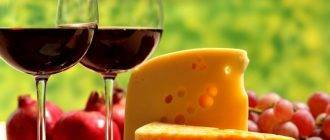
Be sure to read:
The benefits of red wine for weight loss: calorie content, wine diet menu
The best appetizer for the light variety is bread croutons, ram, smoked sausages, pork ribs.
How much in non-alcoholic
It contains half as many calories – 260 kcal per liter. The reason for the absence of alcohol is double filtration, reducing fermentation processes at the final stages of production.
How much in dark varieties
The color range of dark varieties directly depends on the degree of roasting and the amount of malt.
The taste of dark beer with a bitter aftertaste and sweet undertones is extremely loved by women, but frequent consumption of dark varieties can affect the figure, because a liter of a dark foamy drink contains as much as 480 kcal.
Live and unfiltered beer: calorie content per 100 g

A live drink is usually on tap; during the preparation process in small breweries, preservatives and hormones are not added to the beer, and it is not pasteurized.
The low-alcohol product has a bright and memorable taste, the foam is thick and does not settle for a long time. “Live” yeast is added to such a drink, which significantly reduces its shelf life, but increases the benefits for the body. A quality product is not subject to filtration.
The energy value is 39 kcal per 100 grams.
Calorie content in 1 liter
The calorie content in one liter ranges from 260 to 480 kcal.
What does caloric content depend on?
The number of calories in a bottle of beer directly depends on the type and method of production. To prepare a natural product, roasted barley or malt is used.
Both ingredients contain large amounts of sugar. Later, hops are added to add bitterness and yeast to begin the fermentation process. During fermentation, alcohol and carbon dioxide begin to be produced in the infusion.
Different varieties have different amounts of ingredients, therefore, one variety has more sugar and yeast, another has less.
Dark varieties have the highest energy value, while non-alcoholic products have the lowest energy value.

